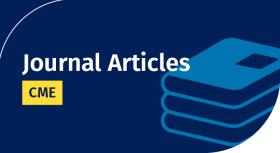
Management of Respiratory Failure in Hemorrhagic Shock
Hemorrhagic shock results in acute respiratory failure due to respiratory muscle fatigue and inadequate pulmonary blood flow. Because positive pressure ventilation can reduce venous return and cardiac output, clinicians should use the minimum possible mean airway pressure during assisted or mechanical ventilation, particularly during episodes of severe hypovolemia.
Hypoperfusion also worsens dead space fraction. Therefore, clinicians should monitor capnography during mechanical ventilation and recognize that hypercapnia may be treated with fluid resuscitation rather than increasing minute ventilation.
Target Audience
Pulmonologists, critical care specialists, translational researchers, and clinicians
Learning Objectives
At the conclusion of this activity, learners should be able to:
- Describe the impact of hemorrhagic shock on end-tidal CO2 as it relates to severe hemorrhage and decreased cardiac output
- Explain the pathophysiology of respiratory failure as observed in hemorrhagic shock
- Apply the principles of cardiopulmonary physiology and pathophysiology to treat respiratory failure in hemorrhagic shock
This section is not in use.
Please visit the Accreditation tab to view Accreditation and Disclosure information.
Accreditation Statement
The American Thoracic Society is accredited by the Accreditation Council for Continuing Medical Education to provide continuing medical education for physicians.
Disclosure Declaration
Article Authorship Disclosures (as submitted to the ATS prior to article publication date)
All relevant financial relationships have been reviewed and mitigated.
Joshua A. Davis, M.D. (Weill Cornell Medicine, New York, New York, USA) reported no relevant financial relationships with ineligible companies.
Seth Manoach, M.D. (Weill Cornell Medicine, New York, New York, USA) is a member of the Research Committee of the Society for Airway Management.
Paul Heerdt, M.D., Ph.D. (Yale University School of Medicine, New Haven, Connecticut, USA) has received grants or contracts from Edwards Lifesciences, royalties or licenses from Baudax Bio, and consulting fees from Edwards Lifesciences and Cardiage, LLC. He has participated in a data safety monitoring board or advisory board for Baudax Bio.
David A. Berlin, M.D. (Weill Cornell Medicine, New York, New York, USA) reported no relevant financial relationships with ineligible companies.
Off-Label Usage Disclosure
None
Disclosures of AnnalsATS CME Planners
The Annals of the American Thoracic Society (AnnalsATS) original research, commentaries, reviews, and educational content of interest to clinicians and clinical investigators in pediatric and adult pulmonary and sleep medicine and medical critical care. The scope of the journal encompasses content that is applicable to clinical practice, the formative and continuing education of clinical specialists, and the advancement of public health.
The publication of articles that meet these goals by itself is only one step in a multi-step process for the translation of evidence-based improvements in are to clinical practice. Testing for CME credit is designed to function as a next step in the process. This is accomplished through a series of questions written by the author(s) to test that readers have the tools needed to translate recommendations for diagnostic and therapeutic clinical care into clinical practice. Members of the AnnalsATS editorial board review these questions and edit these questions for clarity, educational content, and the quality of the evidence supporting the response to the question.
AnnalsATS CME Planners
Margaret M. Hayes, M.D.
Harvard Medical School, Boston, MA, USA
Dr. Hayes reported receiving payments as an author for a chapter on heliox for UpToDate.
Caroline Okorie, M.D., M.P.H.
Stanford University School of Medicine, Stanford, CA, USA
Dr. Okorie reported no financial relationships with ineligible companies.
Instructions to Receive Credit
To receive credit for this journal article:
- Read the journal article. Keep track of how long it takes you to read it.
- Once you open the article, the Post-Test becomes available. After reading the article, answer the post-test questions. You must answer all questions correctly to earn credit. You may take the test as many times as you like.
- Once you pass the Post-Test, the Evaluation becomes available. Answer all the evaluation questions.
- Once you complete the evaluation, select the amount of credit to receive based on the time it took you to read the article.
- You can view, save and print your Certificate by pressing the Certificate button.
- To review the credits you've earned in this system and reprint certificates, go to the My Learning drop-down list. Then select Transcript.
Available Credit
- 1.00 AMA PRA Category 1 Credit(s)™The American Thoracic Society designates this for a maximum of 1.00 AMA PRA Category 1 Credit(s)™. Physicians should claim only the credit commensurate with the extent of their participation in the activity.
- 1.00 Participation

 Facebook
Facebook X
X LinkedIn
LinkedIn Forward
Forward